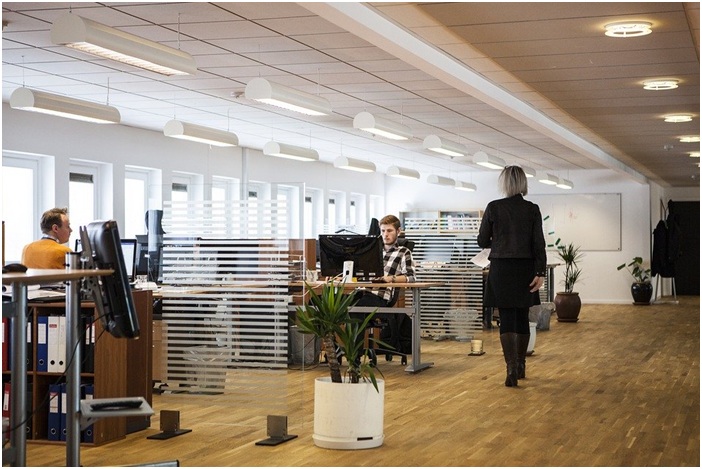There is a multitude of factors that go into a healthy office environment. In addition to having clear delineation of tasks and procedures, staff need to have an environment we’re good physical and mental health can flourish.
Those factors which lead to a healthy workplace environment include good staff relationships with one another and with management as well as the kinds of procedures and processes at foster healthy work and life habits.
Here are five healthy workplace practices and conditions you should seek to incorporate into your own office environment.
The Importance of Physical Movement
Office work usually requires little gross motor physical activity. This can lead to reduced circulation joint pain and difficulty concentrating. There are a few things you can do to improve the physical health of your staff when working in an office. For example, you may want to introduce standing desks where staff have a choice of being seated or standing throughout the day.
You can also make movement around your typical Sydney office with a new office fit-out that is designed to make your office work as pleasant as possible.
Physical movement is also improved by maintaining a clutter-free environment that minimises physical hazards. For larger corporations, there may be an opportunity to invest in some basic gym equipment which allows for lunchtime cardio workouts and exercise.
Maintaining a Clean Environment
A clean environment not only enables clear thinking but also reduces the number of common physical ailments associated with working and doors. Both dust and odours and even moulds can begin to develop in an unclean office environment.
This is particularly true during the warmer months. Ensure that the office building is maintained and cleaned on a regular basis. If using carpeted areas for your office environment then ensure that your carpets are dry cleaned at least annually.
Be sure to keep dust to a minimum as well as any odours which may impact office productivity or increase the likelihood of sinus and respiratory conditions. These last two factors are a significant cause of sick days and reduced productivity and health among office workers.
Taking Breaks
Taking breaks enables staff to manage their stress more effectively. Having time to walk away from the office environment, go for a walk outdoors or simply socialise with colleagues is essential for morale as well as physical health.
Stress-related work issues can also lead to poor sleeping habits and negatively impact employment and productivity. Sleep deprivation is a severe problem in the workplace and can lead to job loss as well as poor health.
Some office environments have helped overcome these kinds of problems by providing recreation facilities as well as quiet rooms where staff can escape the noise and busyness of the office environment.
Getting Enough Fresh Air
Clean, fresh air that is unpolluted and uncontaminated air can have a dramatic effect on the overall health of your office staff.
Clean air can enhance blood flow and add oxygen availability in the body leading to more focused and alert mental states. A lack of fresh air typically leads to tiredness and fatigue and reduces the ability of the brain to react quickly and sharply to staff crisis, workplace challenges and stress.
Fresh air is critical for a healthy mind and body. If taking short breaks throughout the day is not possible, then consider creating clean air through the use of open windows or healthy plant life.
The Impact of Colour and Office Design
Workplace culture and productivity, not to mention good health can be dramatically improved through the careful implementation of colour as well as the design and layout of the office.
We have known for a long time that low wavelength colours such as green and blue, colours which are typically found in nature, tend to improve focus and efficiency.
Yellows and oranges have been known to create innovation and focused energy which is particularly helpful for those working in design development and other creative careers.
Crowded and cluttered offices, while they might look busy and productive often reduce productivity. Creating quiet spaces and wide-open spaces is conducive to clear thinking and planning.
On the other hand, too much comfort will invariably cause workers to slow down in terms of productivity. If your office looks like a lounge room, then you should expect your staff to operate at a similar pace to the one they operate under in their own homes. Noisy environments increase stress levels and will overtime reduce productivity and office staff health.
It’s important to remember that, along with the other aspects of your office environment office design can prove to increase the hidden costs of employee healthcare. Whether those costs are incurred through increased sick days due to poor design which increases stress or reduces mobility, poor office design can also lead to injury and accidents.
High ceilings are preferred to low ceilings and plenty of natural light Aegis tensions and make the office environment a more pleasant place to be.
Not every office environment has the luxury of implementing all of these suggestions. But, being aware of them will enable you to take advantage of those strategies which reduce stress, improve productivity as well as increase staff job satisfaction – all things that lead to a more successful business environment.
Feature Image, Pixabay CC0 License



